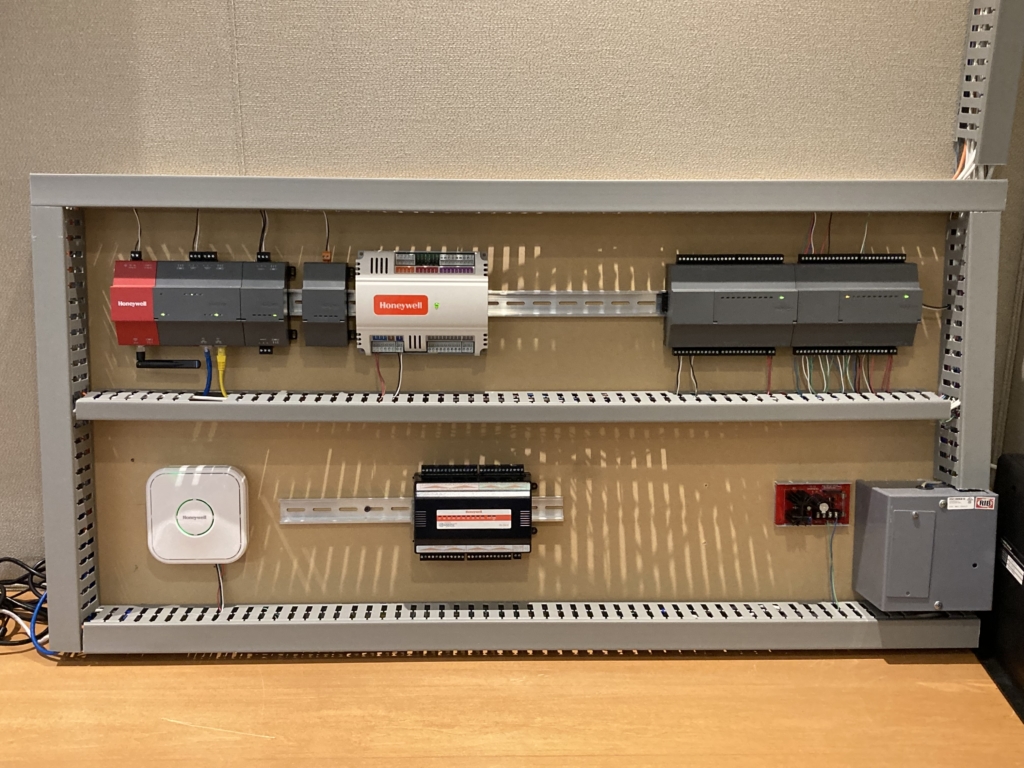Industry tackles rising standards for healthy buildings
As America approaches year three of coping with Covid-19, the commercial real estate industry is implementing lessons learned about how to improve indoor air quality and preparing for heightened, long-term requirements for healthy buildings.
“The pandemic has created an incredible focus on indoor air quality and how it impacts people’s lives. As a society, we are now wondering, what do we breathe all day,” said Martin Knott, President of Advanced Indoor Resources (AIR). “I think the real estate industry has done a really good job at upgrading air filters and looking at other measures to deal with Covid-19. But there’s more to do.”

Working with industry experts and a panel of scientific advisors, Advanced Indoor Resources (AIR) developed the VisionAir system. It combines tailored HVAC upgrades with Honeywell controllers to monitor and manage eight key elements of air quality. The VisionAir dashboard provides owners with real time information about the environment inside their buildings. Photo courtesy of AIR.
Improved air filters (MERV 13 or better) have become standard in many commercial and public buildings. Many building owners have opted to increase the number of air exchanges per hour and conduct a daily, pre- or post-purge of indoor air by running ventilation systems an extra two to three hours when the building is empty, said Matt Karle, Director of the Special Projects Group at Gilbane.
Some property owners and developers have evaluated and implemented other technologies. A growing number of new projects include dedicated outdoor air systems (DOAS), Karle said. The systems, which can cost more to install and operate than traditional air handling units, supply 100 percent outdoor air to a building rather than recirculating a mix of indoor and outdoor air.
Ultraviolet light devices, which can kill airborne pathogens and viruses as air passes through ventilation systems, are a relatively inexpensive and increasingly common part of building systems. Some buildings have installed bipolar ionization technology. Those systems generate positive and negative ions that travel through the building’s airstream and attach to particles, pathogens and gas molecules. The charged particles combine with other particles, enabling filters to remove them from the air supply.
In 2021, St. John Properties implemented a multi-faceted plan to improve air quality in 2.4 million square feet of its portfolio. That plan included installing UV-C light disinfecting systems and higher quality air filters, upgrading coil cleaning and HVAC system sanitation, and extended HVAC run times.
More than a response to Covid-19, the initiative was “part of our healthy building strategy,” said Ryan Schwabenbauer, Director of Sustainability.
In keeping with its adoption of LEED and other sustainability measures, St. John Properties has taken multiple steps in recent years to improve indoor air quality, Schwabenbauer said. Those have included upgrading HVAC equipment, using building materials and cleaners that emit fewer volatile organic compounds (VOCs) and conducting more frequent air exchanges within buildings. Industry researchers recommend four to six air changes per hour in commercial properties, depending on their use. St. John Properties conducts seven per hour.
“These initiatives come with costs, but they are more than worth it,” Schwabenbauer said. “Sometimes it is hard to see the benefits in accounting terms. You see the cost of better HVAC technology and delivering more airflow. Many studies show that by creating that healthier environment, you increase worker productivity and reduce employee absences.”
Those initiatives also enable St. John Properties and its tenants to thrive in the midst of Covid-19 and any future pandemics, said Rob Cancelliere, Senior Property Manager. “Everybody wants to run their businesses normally. Nobody wants to keep readapting and reconfiguring. St. John’s efforts give tenants added comfort that we are providing a healthy environment so they can concentrate on growing their business, being the best they can, staying healthy and functional in their space, and enjoying their space.”
Industry watchers predict that market demand for indoor air quality will continue to grow as large employers and individual workers embrace higher standards for healthy workspaces, Karle said. Assorted legislators and industry regulators are also considering increasing air quality standards in building codes.
To meet that emerging demand, CRE owners are going to have to further expand their thinking about indoor air quality, Knott said. “Companies have responded to Covid-19, but I don’t think they have fully gotten their arms around what indoor air quality is all about. One of the biggest things I learned during the pandemic is carbon dioxide levels within buildings are the real drivers of health.”
Heightened CO2 levels inside a building indicate that an HVAC system is not doing enough air exchanges to remove harmful particles from the air, Knott said. That situation can both spread disease and lower productivity.
“Over certain parts per million of CO2, you start to lose cognitive ability,” he said. “You are not nearly as smart as you are when you have all the oxygen you need.”
To deliver healthy indoor air, buildings need to monitor and manage CO2, humidity, temperature and air changes, as well as levels of particulate matter and VOCs, Knott said. Honeywell has already developed a ‘health station’ – an expanded thermostat that tracks all of those metrics. Meanwhile, Knott’s company has developed VisionAir – technology that both tracks those metrics in real time and adjusts HVAC operations accordingly. Implementing the system can involve different upgrades in different buildings, ranging from better filters or longer HVAC runtimes to UV-C systems and advanced building automation.
“We are excited about our industry right now. We are going through a major transformation from being a comfort business to being part of the healthcare technology sector,” he said. “We are bringing technology to the table that delivers high quality indoor air.”